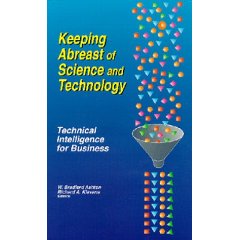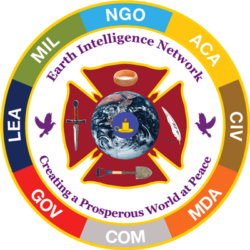|
2002 |
SE |
Training | Bjore | OSINT 101: Sense-Making |
|
2002 |
US |
Training | Black | OSINT 101: Desktop Tools for Smart People |
|
2002 |
US |
Training | Chester | OSINT 101: NATO Lessons Learned |
|
2002 |
US |
Training | Henk | OSINT 101 Respecting the Cultural Dimension: Intelligence and Africa |
|
2002 |
US |
Training | Hock | OSINT 101: Overview of the World of Information |
|
2002 |
US |
Training | Hohhof | OSINT 101: Competitive Intelligence Analysis Tools & Web-Sites |
|
2002 |
US |
Training | Klavans & Ashton | OSINT 101: Technology Mapping with Open Sources of Information |
|
2002 |
US |
Training | Lee | OSINT 101: Geospatial Information Sources |
|
2002 |
US |
Training | Manwaring | OSINT 101: Intelligence & Asymmetric Warfare |
|
2002 |
US |
Training | Marshall | PSINT 101: OSINT and Global Hotspots |
|
2002 |
US |
Training | Moore & Krizan | OSINT 101: Core Analytic Competencies |
|
2002 |
US |
Training | Smith | OSINT 101: Internet and Commercial Online Exploitation |
Review: Keeping Abreast of Science and Technology: Technical Intelligence for Business
5 Star, Intelligence (Commercial)
![]()
April 8, 2000
W. Bradford Ashton
Dick is a genius, and he and Bradford Ashton have pulled together a number of very fine contributions in this book. Still, they sum it up nicely in the concluding chapter: “The formal practice of developing technical intelligence in American business is only in its infancy.” They have a nice appendix of sources on scientific and technical intelligence that is missing a few big obvious sources like the Canadian Institute for Scientific and Technical Information (CISTI) and the Defense Technical Information Center (DTIC) as well as the Institute of Scientific Information (ISI) and several smaller sources. On balance, this technical intelligence community is, as Bradford notes, in its infancy. It is U.S. centric, does not yet understand operational security and counterintelligence, is weak of cost intelligence, relies too heavily on registered patents, and has too few practical successes stories. Especially troubling is the recent trend within DIA and the Air Force of cutting off all funding for open source exploitation of Chinese and other foreign S&T sources, combined with a dismantling by many corporations of their libraries and most basic market research functions. This book is an essential reference and I admire its authors greatly-sadly, they are part of a small minority that has not yet found its full voice.


